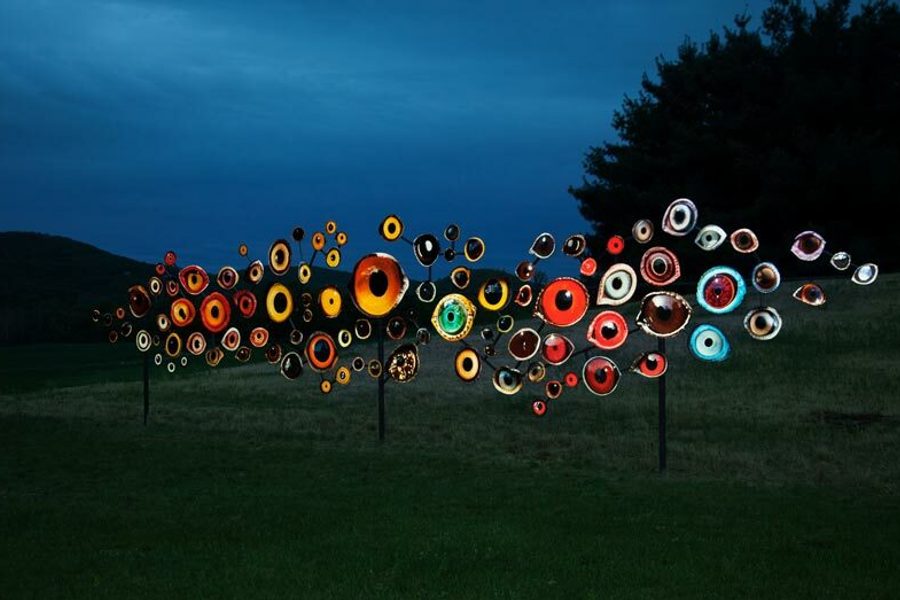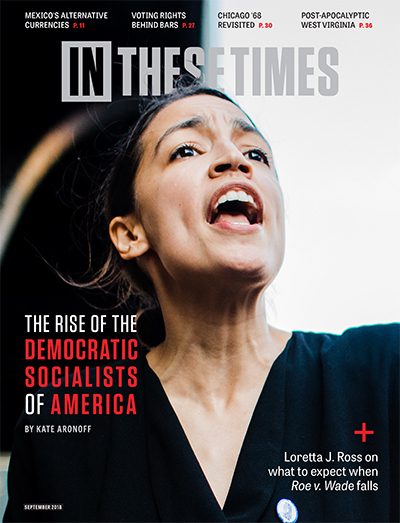Imagining What Birds Think of Climate Change
An artist anticipates the end of the world from an avian perspective.
Zachary Kligler

In Storm King Art Center’s Indicators: Artists on Climate Change, 17 artists offer unique responses to the destruction and destabilization wrought by planetary warming. The works, installed across Storm King’s museum and 500-acre campus, include the accusatory gaze of Jenny Kendler’s sculpture, “Birds Watching”: 100 eyes, each belonging to a different species of bird threatened by climate change, looking back at the humans who might destroy them. Kendler spoke with In These Times about environmentalist art, capitalism and building a better way to be human.
What led you to create “Birds Watching”?
When I was invited to be part of the show, my immediate thought was about how to represent nonhumans. Nonhuman species are becoming a new and completely unacknowledged sacrifice zone in extraction capitalism, and birds are particularly threatened by climate change because it impacts their migration. I’m interested in anything that deposes the hierarchy of human exceptionalism and recognizes that we’re actually embedded in these complex ecosystems.
How does your work help viewers escape the logic of extraction capitalism?
A lot of falsities have to be perpetuated in order to make people willing participants in a system that is so destructive, not only to our ecosystem but to ourselves. Human beings are social apes, we need connection, and our needs can be fulfilled in rich and deep ways in genuine participatory communities embedded in the natural world. But most of those desires have been subverted into consumerism. I see greater participation in the natural world as a way out.
What role does art play in helping us move forward?
A lot of times art is about proposing new ideas and new ways of being. Art can show us how life could be otherwise. It can also help us learn how to mourn. How are we going to come to terms with the tremendous losses that we have faced and that we’re going to face in the coming years, especially due to climate change? I still hold out hope — I’m not a fatalist — but how do we come to terms with what we’re going to lose?
INDICATORS: ARTISTS ON CLIMATE CHANGE, on display at Storm King Art Center, New Windsor, N.Y., through November 11






